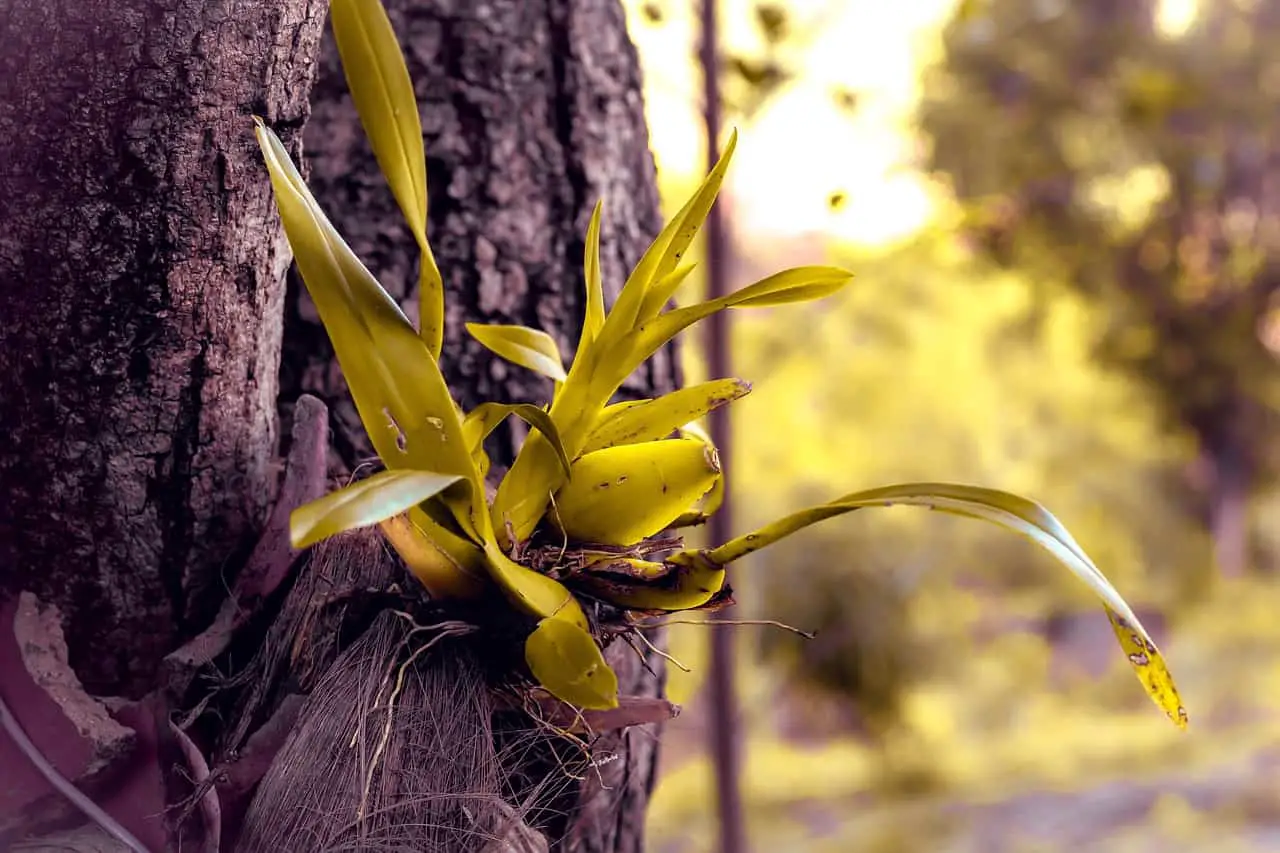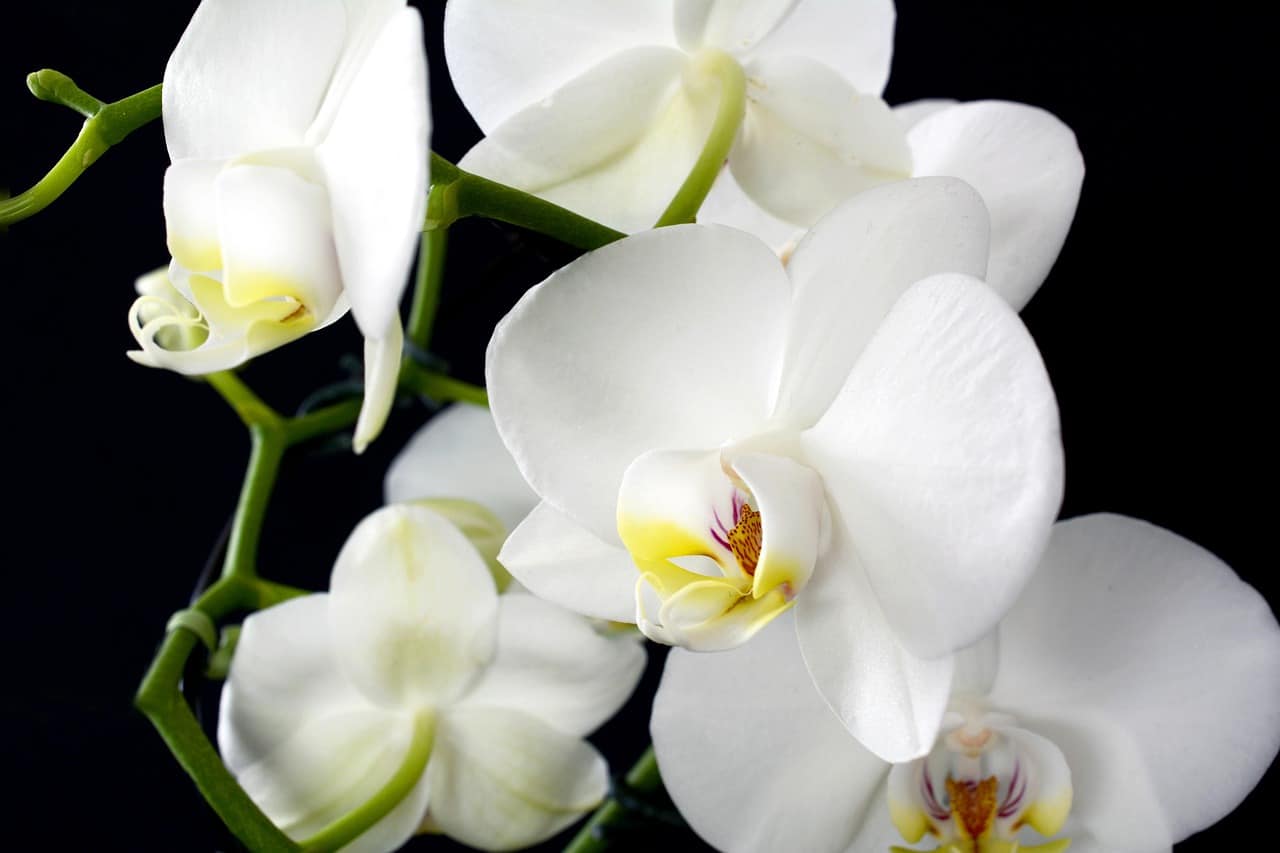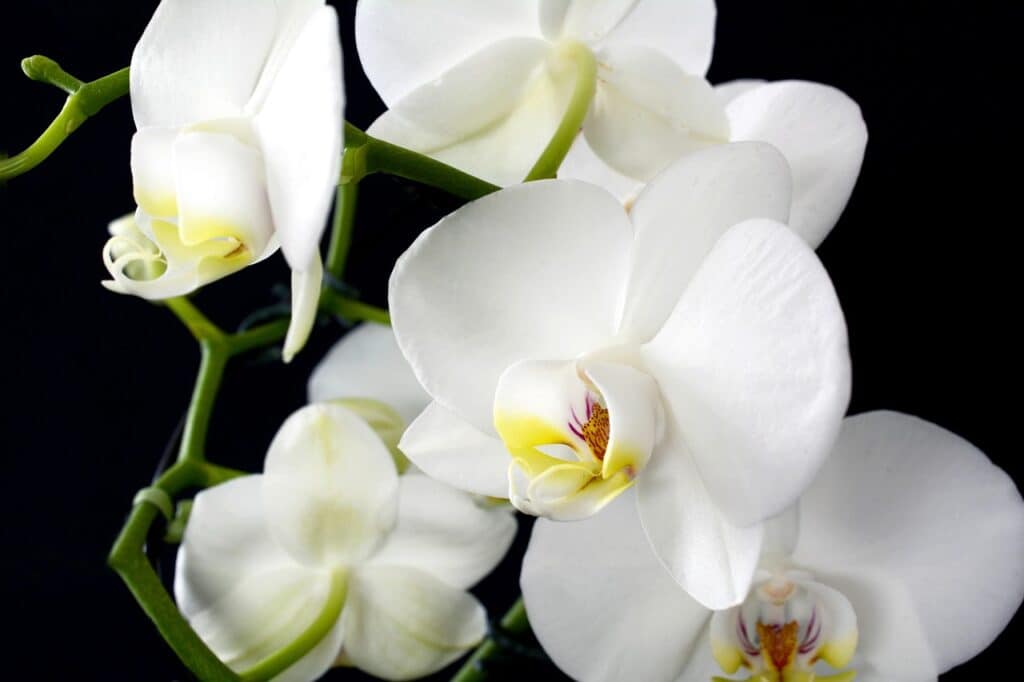Orchids, with their exquisite beauty and delicate charm, have enchanted enthusiasts for centuries. Orchid cultivation often involves meticulous attention to detail, and one of the critical decisions in caring for these unique plants is selecting the appropriate growing medium. Among the many options, two of the most popular choices are orchid bark and sphagnum moss. In this article, we’ll explore the differences between these two growing mediums, their advantages and disadvantages, and how to decide which one is best for your orchids.

How To Sse Sphagnum Moss For Orchids
Begin with gathering your supplies, including sphagnum moss (moistened if it’s dry), orchid pots with drainage holes, your orchids, labels for identification, orchid-specific fertilizer, and clean tools. Start by adding a layer of moistened sphagnum moss at the bottom of the orchid pot. This layer serves to create a humid environment around the orchid’s roots. Place your orchid in the pot, spreading its roots over the layer of sphagnum moss. Add more moss around the sides to secure the orchid without compacting the roots. Water the orchid thoroughly, ensuring proper drainage. Apply orchid fertilizer following the recommendations for your specific orchid type.
Position the potted orchid in an appropriate location with suitable light conditions. Keep an eye on the moisture levels in the sphagnum moss, allowing the top layer to dry slightly between waterings to prevent overwatering. Lastly, be prepared to repot the orchid as needed, typically every one to two years, as sphagnum moss eventually breaks down. Using sphagnum moss as a growing medium helps create the ideal conditions for your orchids, ensuring their health and the potential for vibrant blooms.
Understanding Orchid Bark
Orchid bark, made from the bark of various tree species, is a well-loved and widely used growing medium among orchid enthusiasts. It offers several advantages:
- Aeration: Orchid bark provides excellent aeration for orchid roots. Its chunky texture allows for air circulation and prevents roots from suffocating.
- Drainage: It has superb drainage properties, reducing the risk of overwatering and root rot, which can be detrimental to orchids.
- Longevity: Orchid bark has a longer lifespan compared to some other growing mediums. It doesn’t break down as quickly, allowing for more extended use between repotting.
- Variety: Orchid bark comes in various sizes and types, offering flexibility for different orchid species and growth conditions.
The Benefits of Sphagnum Moss
Sphagnum moss, on the other hand, is another popular choice for orchid cultivation and has its own unique advantages:
- Water Retention: Sphagnum moss retains moisture exceptionally well, making it an excellent choice for orchids that prefer consistently moist conditions or higher humidity.
- Humidity Enhancement: It contributes to higher humidity levels in the orchid’s immediate environment, which can benefit orchids from naturally humid habitats.
- Suitable for Some Species: Some orchid species, like certain types of Masdevallia and Dracula orchids, thrive in sphagnum moss due to their specific moisture requirements.
- Ease of Use: Sphagnum moss is easy to work with and is ideal for beginners in orchid cultivation.
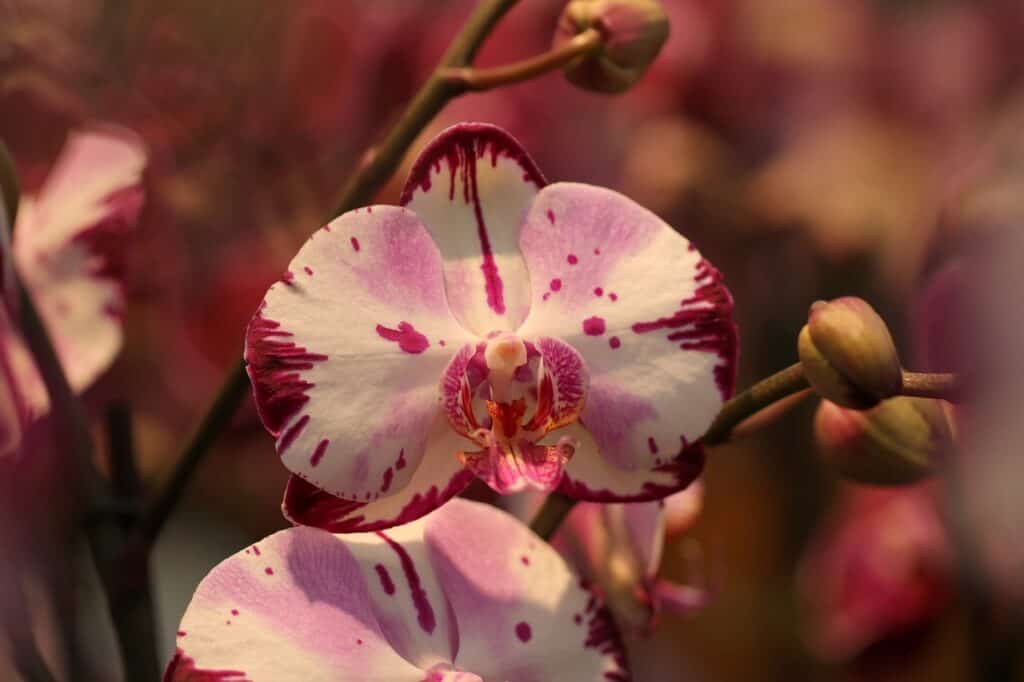
Best Sphagnum Moss For Orchids
Selecting the best sphagnum moss for your orchids is essential to ensure their health and well-being. Here are some popular and well-regarded sphagnum moss products that orchid growers often use:
- Besgrow Orchiata New Zealand Sphagnum Moss: Orchiata is a reputable brand known for its premium sphagnum moss. This long-fibered sphagnum moss is carefully processed to retain its natural qualities and offers excellent moisture retention and aeration for orchids.
- AAA New Zealand Sphagnum Moss: AAA New Zealand Sphagnum Moss is another top-quality option. It is sustainably harvested and processed to maintain its long fibers, making it suitable for various orchid species.
- Mosser Lee Long-Fibered Sphagnum Moss: This sphagnum moss is readily available and budget-friendly. It’s often used for orchids and provides good moisture retention and drainage.
- Besgrow Spagmoss Premium New Zealand Sphagnum Moss: Besgrow offers Spagmoss, which is well-regarded for its consistency and quality. It’s long-fibered and retains moisture effectively.
- Sun Bulb Better-Gro Premium Grade Orchid Moss: While not pure sphagnum moss, this product is a blend of sphagnum moss and other materials. It’s suitable for orchids and offers good moisture retention and aeration.
When selecting sphagnum moss for your orchids, look for products that are labeled as “long-fibered” or “orchid-grade” as these tend to have characteristics that are beneficial for orchid cultivation. It’s also a good idea to consider the sustainability and sourcing practices of the manufacturer, as sustainable harvesting methods are important for the preservation of sphagnum moss in the wild.
Before using sphagnum moss, make sure to properly prepare it by soaking and rinsing to remove any impurities or contaminants. Additionally, monitor the moisture levels in your orchid pots to prevent overwatering, as sphagnum moss can retain moisture for an extended period. This will help ensure your orchids thrive in their chosen growing medium.
Comparing the Two
To choose the best-growing medium for your orchids, you must consider several factors:
- Orchid Species: Different orchid species have unique requirements. For instance, epiphytic orchids like Phalaenopsis often thrive in orchid bark, while some terrestrial orchids may do better in sphagnum moss. It’s essential to research the specific needs of your orchid species.
- Local Climate: Your local climate and environmental conditions play a significant role. If you live in a dry climate, you might benefit from the moisture-retentive qualities of sphagnum moss. In contrast, those in more humid environments might prefer the aeration of orchid bark.
- Watering Habits: Your personal watering habits are another factor to consider. If you’re prone to overwatering, the excellent drainage of orchid bark can help prevent root rot. However, if you’re diligent with your watering and prefer a more hands-off approach, sphagnum moss might be a better fit.
- Repotting Frequency: Orchid bark typically requires less frequent repotting due to its longer lifespan, while sphagnum moss may break down more quickly and necessitate more regular repotting.
- Adaptability: Some orchid growers even use a combination of both growing mediums to cater to specific orchid needs. This adaptable approach allows for optimal care tailored to each orchid’s requirements.
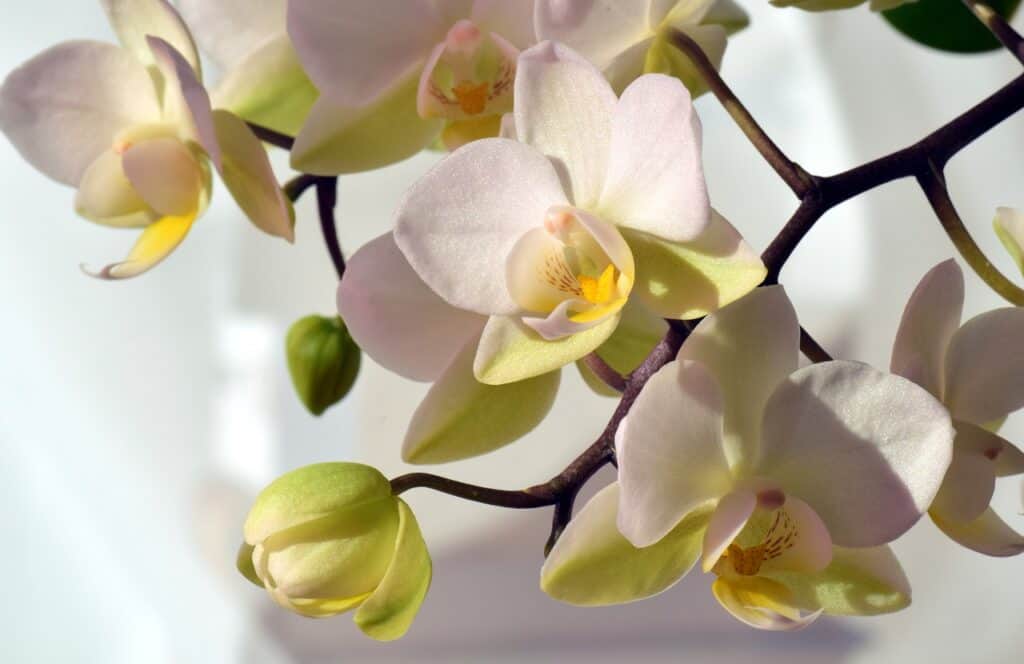
Tips for Choosing the Right Medium
- Research Your Orchid: Understanding the specific needs of your orchid species is crucial. Consider its natural habitat, watering requirements, and humidity preferences.
- Consider Local Conditions: Take into account your local climate and adjust your growing medium accordingly. If you live in a dry climate, you might need to provide more moisture, while in a humid environment, better aeration may be necessary.
- Assess Your Watering Habits: Be honest about your watering habits. If you tend to water your orchids frequently, a growing medium that promotes faster drying, such as orchid bark, can be beneficial.
- Experiment and Adapt: Orchid cultivation is a journey of learning and adaptation. Don’t be afraid to experiment with different growing mediums to see what works best for your orchids. Over time, you’ll become more attuned to their needs.
Conclusion
Choosing between orchid bark and sphagnum moss ultimately depends on your orchid species, local conditions, and your own care practices. Both growing mediums have their strengths, and the right choice can make a significant difference in the health and vibrancy of your orchids. The key is to research, adapt, and always be attentive to the individual needs of your cherished orchids, as they reward your care with their stunning blooms and enduring beauty.
